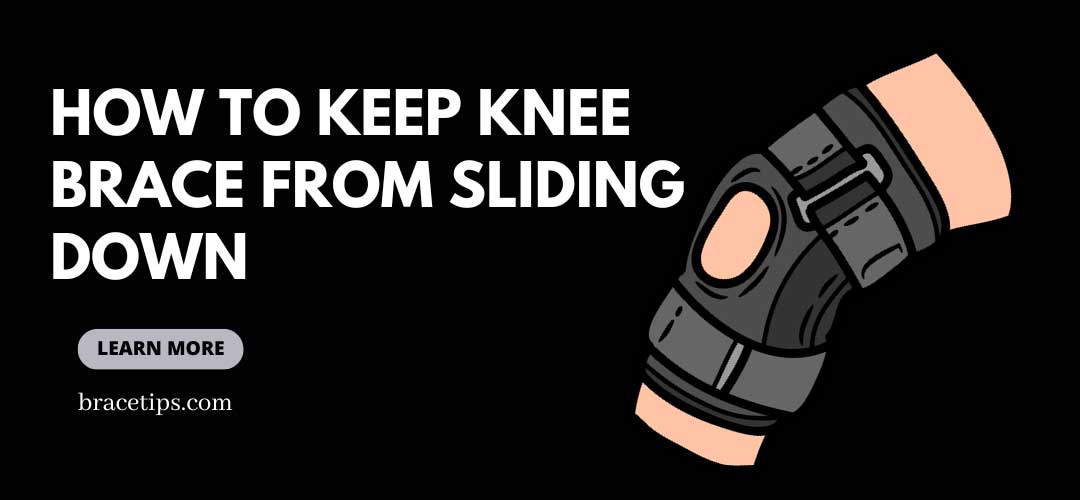Knee braces are important instruments for providing support, lowering pain, and improving rehabilitation following an accident. However, a major discomfort that many people face is their brace’s inclination to slip down throughout regular duties. This issue can have a substantial impact on its efficiency, perhaps jeopardizing therapeutic advantages and causing discomfort. If you want to know how to keep a knee brace from sliding down, you’ve come to the perfect place.
Understanding the Causes
Before you can find a solution, you must first understand why the problem arises in the first place.
- Improper sizing: A brace that does not fit properly has a natural propensity to slide.
- Material quality: Lower grade materials will eventually wear out and lose their flexibility.
- Sweating and skin oils: These can act as natural lubricants, increasing the likelihood of the brace moving.
- Incorrect positioning: If the brace is not correctly positioned in the start, it is more prone to slide.
Choosing the Right Knee Brace
Choosing the right brace can have a big impact on its effectiveness:
- Proper sizing: To reduce movement, make sure your brace fits snugly.
- Types of braces: Different designs address various purposes. Choose one that is appropriate for your personal needs.
- Material considerations: Choose high-quality fabrics that are both comfortable and long-lasting.
Proper Application Techniques
The manner in which you put on your brace can affect its effectiveness:
- Clean and dry your leg: Remove any oils or moisture that could cause sliding.
- Position the brace correctly: Follow the manufacturer’s instructions.
- Secure all straps and adjustments: Check that everything is tight and in position.
- Use adhesive sprays or skin barriers if needed: These can provide an additional degree of security.
Keep the Brace Tight
Ensuring your brace is tight can significantly reduce its movement:
- Check regularly: Your brace may become looser over time. Check it on a regular basis to make sure it’s snug but not too tight.
- Opt for adjustable straps: Braces with adjustable characteristics allow for simple repositioning.
- Maintain blood flow: While a good fit is essential, it should never impair circulation or cause pain.
Skin Interface Options
Increasing skin contact can improve brace stability:
- Anti-slip lotions: To improve the grip between your skin and the brace, you might use specialized lotions.
- Barrier tapes: For increased friction, place these sticky sheets on the skin beneath the brace.
- Skin-friendly adhesives: Certain glues are designed for skin contact and can help keep the brace in place.
- Avoid regular moisturizers: Common lotions and oils can make the brace move more easily.
Additional Tips to Prevent Slippage
- Compression sleeves: Wearing one underneath might improve grip and provide additional support.
- Anti-slip products: Additional friction can be provided by bands or pads.
- Clean the brace regularly: This aids in the preservation of grip and suppleness.
- Avoid lotions: Excessive usage of skincare products can cause the skin’s surface to become slick.
Role of Activity Level
Various physical activities can have an impact on how your brace behaves:
- Different impacts: Running or jumping may cause more brace movement than walking.
- Adjust based on activity: Consider readjusting or switching brace styles depending on what you intend to perform.
When to Seek Professional Advice
Sometimes, it’s essential to consult experts:
- Persisting problems: If you’ve tried a variety of do-it-yourself remedies without success, it’s time to seek professional advice.
- Orthopedic specialists or physical therapists: They can provide customized solutions and recommendations.
- Custom-made options: Consider a custom brace if off-the-shelf choices aren’t functioning.
Conclusion
A well fitted, sturdy knee brace is critical for therapeutic efficacy and general comfort. By following the tactics provided in this tutorial, you may ensure that your knee brace performs its job without slipping.
FAQs
Q1. How often should the knee brace be cleaned?
Ans: After each use, especially if you are sweating.
Q2. Can regular detergent be used to clean the knee brace?
Ans: Yes, but always follow the manufacturer’s instructions.
Q3. How tight should the brace be?
Ans: Snug enough to keep you from moving, but not too tight.
Q4. Any exercises for strengthening the knee?
Ans: Yes, activities such as squats, leg lifts, and particular stretches can help. Consult a physiotherapist for a personalized program.
Your expertise is valuable. Please share your advice and experiences in the comments section below. If you have recurring brace-related concerns, please consult a specialist to get the best results.

